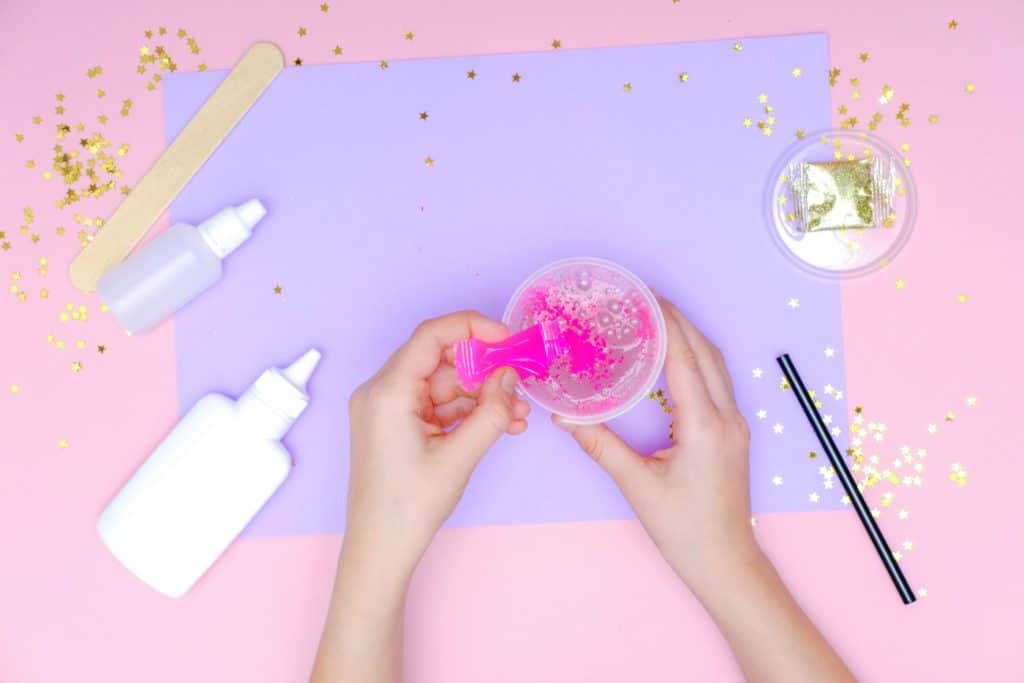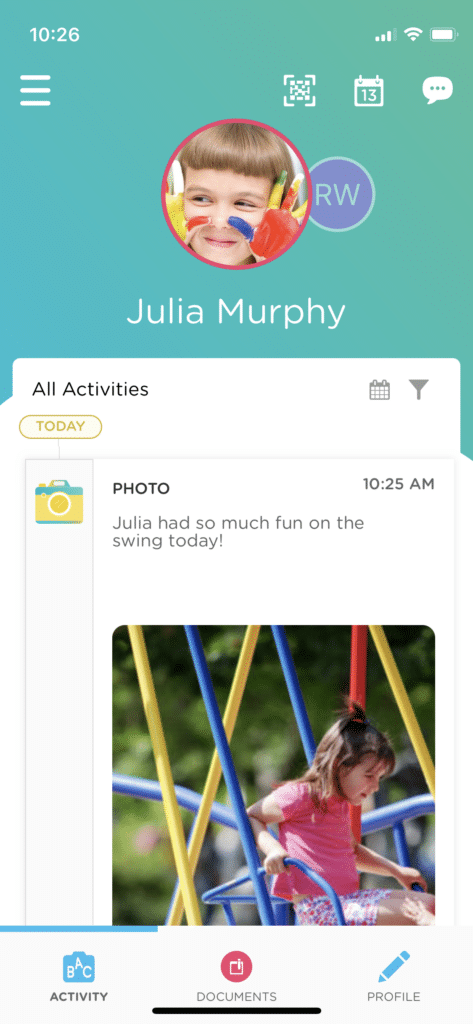
This blog was originally published on Feb. 7, 2022, and updated on Feb. 7, 2024 with new information.
When we think of Valentine’s Day activities for kids, the first ideas that pop into our heads are cutting out hearts and making cards for parents. Of course, moms and dads love receiving such crafts. But they also love when their children are learning about science, even at a young age.
Let’s take a look at how you can mesh this traditional day of love with a love of science with these three activities!
Valentine’s Day Confetti Slime
Making slime is a fun way to teach how water changes the consistency of an object!
Cool slime recipes abound, but ones that don’t require borax powder or liquid starch are harder to find. This one from Inspiration Laboratories uses saline – a much safer option for your little ones!
Here’s what you’ll need:
- One 5-ounce bottle of Elmer’s pink or purple transparent glue
- 1/2 cup water, or 1/4 cup for a thicker slime
- 1/2 teaspoon baking soda
- Glitter (pink, red and purple work well for Valentine’s Day!)
- Heart confetti
- 1 tablespoon saline solution
Pour the glue into a bowl, add the water and stir with a craft stick or spoon. (You could have different kids add different amounts of water to their slime to illustrate the different results.)
Once the water is completely mixed into the glue, add the baking soda and stir again. You can add the glitter and confetti now, or wait at the end of the project.
Next you’ll add the saline. Start with a little less if you’re worried about your slime being too brittle, and stir in quickly. The slime will be sticky at first, so keep stirring until it pulls away from the container.
Drop a few drops of saline into your palms and knead the slime until it reaches the consistency you like.
Lastly, it’s time to knead the slime. This will keep the slime from sticking to you.
Does your slime have enough glitter and confetti? If not, add some more!
Dissolving Candy Hearts

Whether conversation candy hearts actually taste good is a matter of debate. No matter your opinion on this staple of Valentine’s Day, there can be no debate that it’s fun to watch them dissolve with this experiment from Little Bins for Little Hands.
It’s a great chemistry lesson in solubility, and it doesn’t require buying expensive supplies.
First, print out this dissolving candy hearts science worksheet.
Here’s what else you’ll need:
- Test tubes and rack (or clear cups or jars)
- Conversation candy hearts
- Variety of liquids (cooking oil, vinegar, water, milk, juice, rubbing alcohol or hydrogen peroxide)
- Timer (optional)
You have some options for how you want to proceed with this experiment. Choose the one that best fits the time you have and the ages of your students.
Option 1: Use just water to show how a candy heart dissolves. Explain why water dissolves sugar. This explanation can get pretty complicated, especially for little ones, so adapt your lesson to their interest and age!
Even a small water bin with a handful of candy hearts makes a playful and safe-to-taste sensory science option for your littlest students!
Option 2: Dissolve the hearts in waters of varying temperatures. Ask your students whether they think the hearts will dissolve faster in hotter or colder water. Then explain that sugar dissolves faster in hot water than it does in cold water because hot water has more energy than cold water. When water is heated, the molecules gain energy and move faster. As they move faster, they come into contact with the sugar more often, causing it to dissolve faster.
Option 3: Use a variety of liquids such as vinegar, oil and rubbing alcohol to test which liquid is a better solvent.
Whichever option you choose, add an equal amount of the chosen liquids to each test tube or cup and enlist your kids’ help with measuring. Discuss each liquid and ask the kids which they think will dissolve the candy fastest. If you’re using just water, ask how long the heart will last before it dissolves.
Add a candy heart to each liquid and watch what happens!
If you want to take it a step further, perhaps in a preschool class, use a timer. You could set a time limit to see the differences in how the candy dissolves in each liquid. Or you could opt to let them sit for hours, perhaps checking on them after naps or at snack time.
Write a Love Letter in Invisible Ink and Send it in a Bottle
This Minieco craft gives your kids a way to practice their letters, or just make a drawing, and place it in a cool container!
Here’s what you’ll need:
- White paper
- Multiple colors of construction paper
- Lemon juice
- Q-tips
- Empty bottles (such as vanilla extract bottles)
Dip the Q-tips into the lemon juice, and write a note or draw a picture on the white paper. It will be invisible, for now!
Put the paper in the bottle.
The kids can then cut out shapes – hearts would be the obvious choice! – from construction paper and add them to the bottle.
To reveal the message, hold the paper up to something warm such as a lightbulb. (You could let parents know they can use an iron with no steam or a candle to read their messages as well, as long as their kiddos aren’t too close!)
Here’s where the science lesson comes in: You can explain to them that lemon juice contains carbon compounds that are colorless at room temperature. Heat, such as from a light bulb, breaks down the compounds and releases the carbon. The carbon oxidizes when it comes into contact with the air and turns brown, making an invisible message visible!
How Family Engagement Includes Families in Classroom Activities

Parents like getting crafts, but they love keeping up to date with what their kids are doing in real time!
With the Procare child care mobile app, you can keep families involved by showing them their children’s day-to-day activities, sharing milestones in real time and helping them reinforce what is taught in the classroom by providing insight into their curriculum and learning objectives.
You can share daily activities, videos, photos and newsletters with parents. Plus, you can use the app for easy, two-way communication and keep parents engaged with calendars to promote upcoming events!


